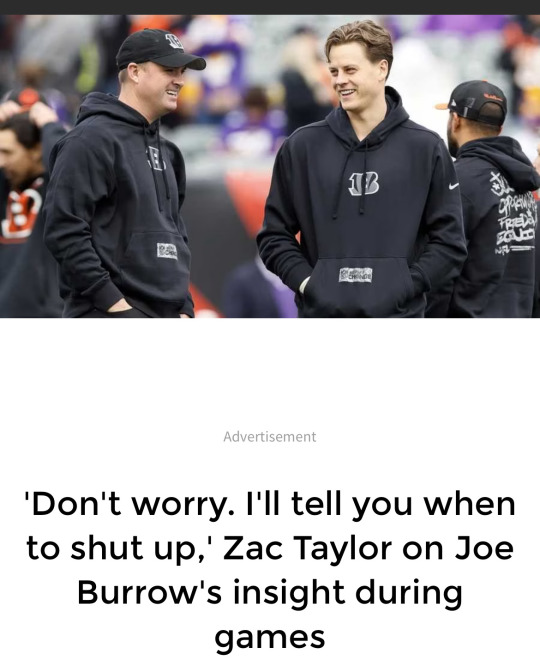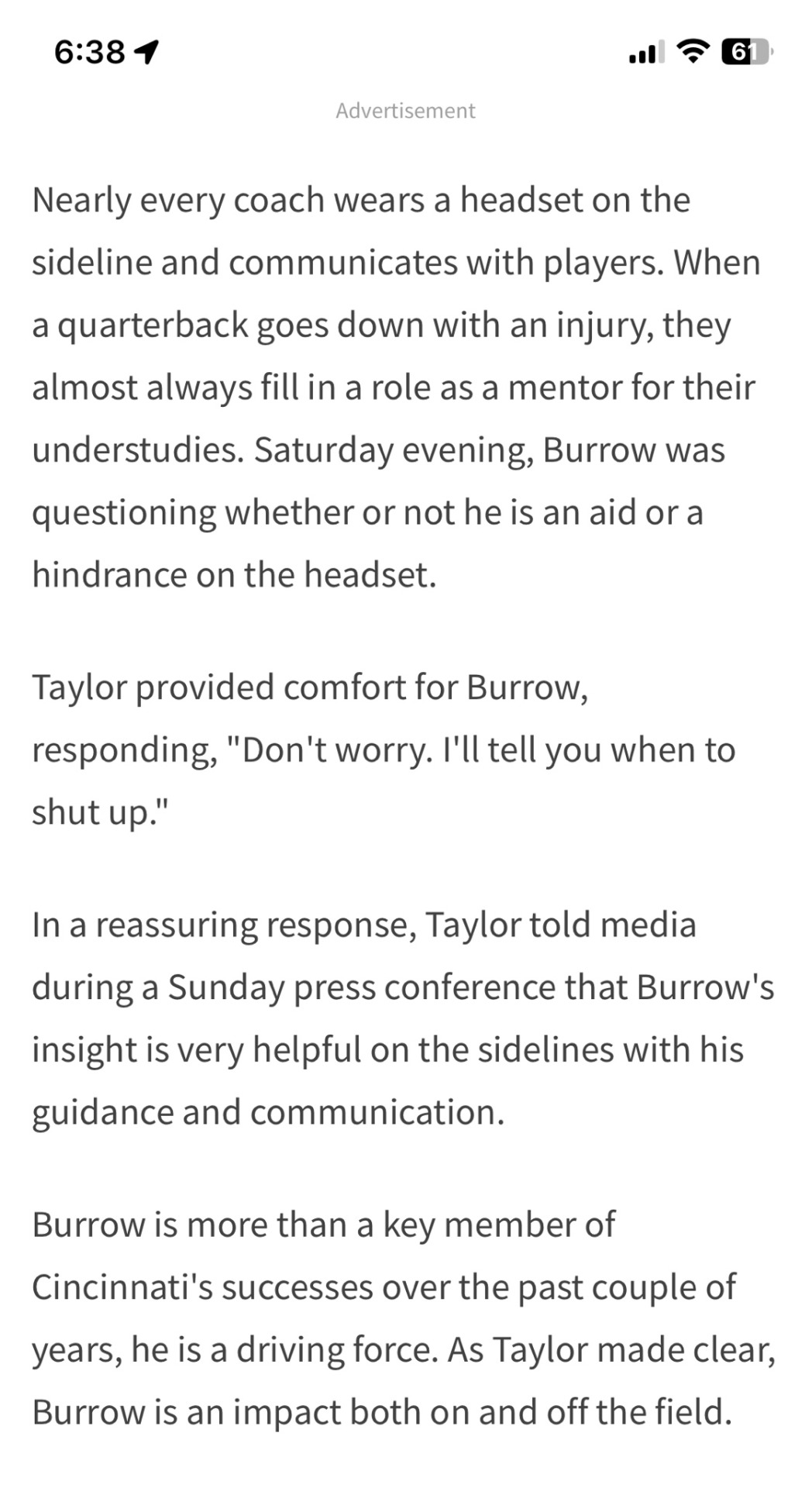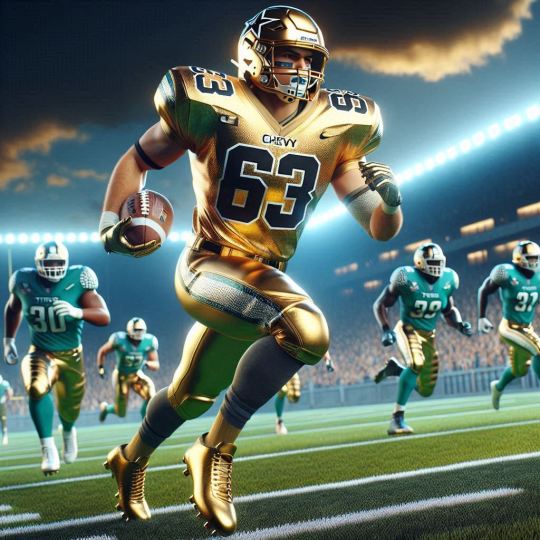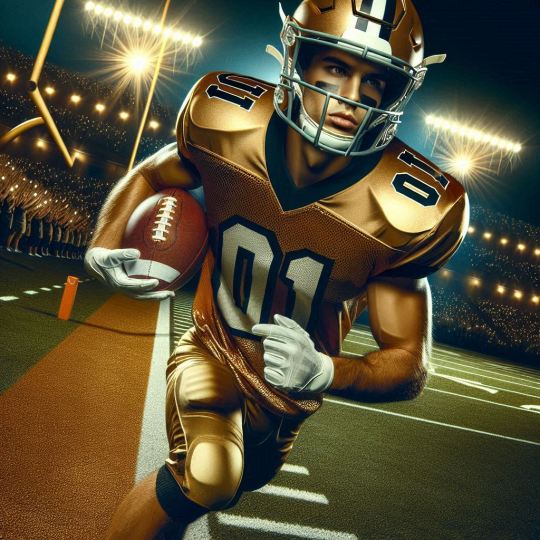#american football team
Explore tagged Tumblr posts
Text
What Is Football American
Football in the United States

The Game Emerges
Gridiron football found its beginnings in elite American universities, and this origin profoundly influenced its unique role in American culture and society. After several decades of informal, student-organized games, which faculty often tolerated as an alternative to more disruptive forms of rowdiness, the first intercollegiate football game took place on November 6, 1869, in New Brunswick, New Jersey. It featured in-state rivals Princeton and Rutgers and followed rules adapted from those of the London Football Association. This soccer-style variant of the game gained prominence as Columbia, Cornell, Yale, and a few other Northeastern colleges embraced it in the early 1870s. In 1873, representatives from Princeton, Yale, and Rutgers convened in New York City to establish the Intercollegiate Football Association and adopt a standardized rulebook.
Notably absent from this inaugural meeting was Harvard, the country’s leading university, whose team preferred playing the so-called “Boston Game,” a hybrid of soccer and rugby. However, in May 1874, during a series of matches with Montreal’s McGill University (with the first match played under the rules of the Boston Game), Harvard’s players were introduced to rugby-style play and immediately embraced it. The following year, for Harvard’s initial football contest against Yale, representatives from both schools agreed to adopt “concessionary rules,” primarily influenced by Harvard’s rugby-style preferences. When spectators, including students from Princeton, witnessed the advantages of the rugby style, it set the stage for a pivotal meeting in 1876. During this meeting, representatives from Harvard, Yale, Princeton, and Columbia convened to form a new Intercollegiate Football Association, basing their rules on those of rugby.
Read This :- Who Invented The Football
History of American Football Timeline
American football has a rich and storied history that has evolved over the years. Here’s a brief timeline:
1869: The first intercollegiate football game is played between Princeton and Rutgers.
1880: The game’s location shifts to New York City, marking the beginning of its nationwide appeal.
1892: The first professional football player, William “Pudge” Heffelfinger, is paid to play.
1920: The American Professional Football Association (APFA), which later becomes the NFL, is founded.
1936: The first NFL Draft is held.
1960: The American Football League (AFL) is established.
1966: The NFL and AFL merge, creating the modern NFL.
1967: The first Super Bowl is played.
1970: The NFL and AFL officially merge, with two conferences established.
1983: The NFL Players Association (NFLPA) stages a strike, leading to significant changes in player compensation.
2002: The NFL expands to 32 teams with the addition of the Houston Texans.
2020: The COVID-19 pandemic impacts the NFL season, leading to adjusted schedules and protocols.
This timeline reflects the growth and transformation of American football into the beloved sport it is today.
What is Gridiron Football
Gridiron football, commonly known as American football, is a captivating and dynamic sport that originated in North America. What sets it apart from other forms of football, like soccer, is its emphasis on physicality and intricate strategies. The game is played on a rectangular field marked with vertical yard lines, earning it the nickname “gridiron.” Two teams, each comprising 11 players, engage in a fierce battle to advance the football down the field, primarily through passes or running plays. The objective is to score points by reaching the opponent’s end zone, either by carrying the ball across the goal line or receiving a pass in the end zone. Gridiron football is renowned for its combination of speed, strength, and tactical prowess, making it a beloved and iconic sport in North America.
American Football Rules
American football, a complex and thrilling sport, operates under a set of rules that guide its gameplay. The game consists of four 15-minute quarters with a halftime break, and each team aims to outscore its opponent. Teams have four downs (attempts) to advance the ball 10 or more yards down the field. If successful, they reset their downs and yardage. Failing to make the required distance in four downs results in a turnover. The game involves intricate plays, with the head coach or quarterback calling offensive plays, while the defensive captain calls defensive strategies. A coin toss at the start determines which team receives the ball first. It all begins with a kickoff, and teams can choose to kick, punt, or attempt a field goal on the fourth down based on their field position. These rules, among others, shape the thrilling and strategic nature of American football.
Rules of the Game Football
Football, a widely celebrated sport around the world, is governed by a set of rules that ensure fair play and exciting competition. Played with two teams, each consisting of 11 players, the primary objective is to score goals by getting the ball into the opponent’s net. The game unfolds in two halves, with a halftime break. Key regulations include rules on offside, fouls, and penalties, which aim to maintain the game’s integrity and safety. Referees oversee matches, enforcing these rules and making crucial decisions. The beauty of football lies in its simplicity and universal appeal, making it the world’s most beloved sport.
USA National Team Football
The USA National Football Team Games, often referred to as the USMNT (United States Men’s National Team), represents the United States on the international football stage. With a rich history and passionate fan base, the team competes in various international tournaments, including the FIFA World Cup and the CONCACAF Gold Cup. Over the years, the USMNT has showcased its talent and determination, making significant strides in the global football community. As the sport continues to grow in popularity across the United States, the national team’s success serves as a source of pride and inspiration for aspiring footballers nationwide.
Managing the Game’s Violence: A Historical Perspective
The early days of football were marked by a raw, unbridled spirit, where athleticism often teetered on the brink of violence. It was in this context that measures to regulate and manage the game’s inherent physicality emerged. In 1894, a pivotal rule was introduced, banning the use of projecting nails or iron plates in players’ shoes, as well as any metal substances on their person. These early rules sought to establish clear boundaries between permissible and impermissible violence on the football field. Over the years, these regulations would evolve, often in response to periods of heightened concern over the safety of players, particularly in the early 1930s and the 1890s.
Enhancing Safety Through Regulation
To enhance safety on the field, the number of game officials grew from a mere two in 1873 to seven by 1983. This increase in oversight aimed to ensure a fair and secure playing environment for all participants. Concurrently, equipment improvements played a vital role in safeguarding players against serious injuries. In the early 1890s, players relied on their long hair and leather nose guards for head protection. The first headgear, introduced in 1896, was a relatively simple design consisting of three leather straps. Over time, this evolved into close-fitting leather caps with ear flaps. The suspension helmet, which created space between the helmet shell and the wearer’s head using straps, made its debut in 1917. Surprisingly, it wasn’t until 1939 (and 1943 for the National Football League) that helmets became mandatory in college football.
However, the introduction of improved equipment brought its own set of challenges. The plastic helmet, unveiled in 1939, initially appeared as a protective measure but eventually became a potentially dangerous weapon. Rules had to be implemented to combat “spearing,” which involved using the head to initiate contact—a practice that posed significant risks to both the tackler and the player being tackled.
Expansion and the Shaping of the Game
In 1879, the University of Michigan and Racine College of Wisconsin introduced football to the Midwest, marking the beginning of the sport’s regional expansion. Notable figures like Fielding Yost at Michigan (1901–05) and Amos Alonzo Stagg at the University of Chicago (1905–09) emerged as major forces in the game. By the 1890s, football had spread throughout the United States, but the triumvirate of Harvard, Yale, and Princeton, collectively known as the Big Three, maintained their dominance in collegiate football well into the 1920s.
Mindful of their stature in the football hierarchy, these three institutions, joined briefly by the University of Pennsylvania, formed the Intercollegiate Rules Committee in 1894, separate from the existing Intercollegiate Football Association. In the Midwest, colleges dissatisfied with this divided leadership asserted their independence by creating what would become the Western Conference, now known as the Big Ten, in 1895.
Football’s expansion was not limited to the Midwest; it reached the South and West as well, though it took some time before conferences were established in those regions. This expansion, marked by regional rivalries and diverse playing styles, contributed to the rich tapestry of American football, a sport that would continue to evolve and capture the hearts of millions across the nation.
Sports and Spectacle: Shaping the Identity of American Football
The early years of American football played a pivotal role in not only defining the sport but also in transforming it into a captivating spectacle. In 1876, the original Intercollegiate Football Association initiated a tradition that would become a cornerstone of the game—annual championship matches held on Thanksgiving Day, featuring the best teams from the previous year. Initially hosted in Hoboken, New Jersey, this grand event made its move to the heart of New York City in 1880, a strategic shift to facilitate attendance by students from universities across the association.
The inaugural game in New York drew a crowd of 5,000, but by 1884, this number had swelled to 15,000 spectators. The game’s popularity continued to soar, attracting 25,000 attendees in 1890 and a remarkable 40,000 in 1893, marking the zenith of Thanksgiving Day games in the city. Accounts of these contests, filled with athletic drama and excitement, began to occupy substantial portions of New York’s major newspapers—sometimes spanning up to three pages in an eight-page publication. Wire services ensured that reports of the games reached every corner of the nation.
By the 1890s, what had once been an extracurricular pursuit at a select group of elite northeastern universities had blossomed into a bona fide spectator sport with a fervent nationwide following. College football was no longer solely about touchdowns and tackles; it had become synonymous with marching bands, spirited cheerleaders, raucous pep rallies, towering bonfires, and the jubilant reunions of alumni during homecoming festivities. This transition, however, presented a complex challenge for college administrators. Balancing the institution’s educational mission with the public’s insatiable appetite for entertainment would prove to be a dilemma that persisted for over a century.
College Football’s Glorious Era
The 1920s marked the zenith of college football, a period when the sport matured into America’s premier sporting spectacle, surpassing even baseball, the erstwhile national pastime. This transformative era witnessed the construction of football stadiums at renowned institutions like Harvard, Yale, and Princeton, whose architectural grandeur drew inspiration from ancient Greek stadiums and the imposing Roman Colosseum. These magnificent structures were emblematic of football’s ascendant cultural status.
The 1920s ushered in a stadium-building frenzy that saw attendance figures more than double, surging past the 10 million mark by the decade’s end. The sport’s soaring popularity was mirrored by a parallel expansion in newspaper coverage, reflecting its growing influence on the American psyche. Newspapers had played a pivotal role in introducing football to a wider audience during the 1880s and ’90s, bridging the gap between the universities and teams and the general populace.
The advent of commercial radio in 1920 marked another watershed moment, as broadcasts of football games became a regular feature by the following year. By the decade’s conclusion, three major networks were airing a slate of games every Saturday, while local stations provided comprehensive coverage of home team matches. Furthermore, newsreel companies devoted a substantial portion, ranging from one-fifth to one-fourth, of their footage to football during the fall season by 1929.
General-interest magazines, such as Collier’s and the Saturday Evening Post, actively contributed to football’s burgeoning popularity by publishing articles penned by or featuring renowned coaches and players. These publications also featured short stories that often revolved around the heroic star who triumphed both on the field and in matters of the heart. Even movie theaters got in on the act, offering college football musicals and melodramas during the autumn months. These films often centered on kidnapped heroes who executed daring escapes in the nick of time, securing the game-winning touchdown to the delight of captivated audiences.
Red Grange and the Professionalism Debate
The 1920s bore witness to the rise of Red Grange, a football icon who would become the sport’s inaugural celebrity. Grange earned national acclaim for his remarkable performances in clashes against formidable opponents like Michigan and Pennsylvania. However, his decision to depart from the University of Illinois, without completing his degree, and join the Chicago Bears of the professional National Football League sent shockwaves through the football world. This move ignited a controversy that rivalled the seismic impact of the rule changes of 1906.
The concept of “professionalism” in any manifestation—whether it involved paying coaches, recruiting and financially supporting athletes, or commercializing a game that was ostensibly amateur—flagrantly contradicted the sport’s professed principles. Yet, paradoxically, professionalism lay at the very heart of the spectacle that unfolded in the colossal stadiums, drawing crowds numbering as high as 120,000 spectators. While college football faced frequent criticism in intellectual journals, its routine celebration in the daily and weekly coverage of popular media effectively drowned out dissenting voices.
In 1929, the Carnegie Foundation published a report detailing instances of professionalism at 84 out of 112 educational institutions. This revelation caused consternation among college administrators, but it was met with relative indifference by the general public and the sportswriters who fueled the fervor surrounding the game. The allure of college football, with its electrifying matchups and larger-than-life stars like Red Grange, proved irresistible, overshadowing concerns about the sport’s adherence to amateur ideals.
American Football Rules Unveiled
American Football, a colossal North American sport with a global following, reigns as one of the athletic giants on the continent. While the game’s reach extends far beyond North American borders, it’s the professional leagues in this region, exemplified by the NFL, that consistently draw the world’s top talent, making these leagues the epitome of competition. The pinnacle of the sport manifests as the Super Bowl, an annual spectacle that captivates millions of viewers worldwide.
The Objective of the Game
At its core, American football aims to accumulate more points than the opposing team within the allocated time frame. To achieve this, teams must progress the ball down the field through a series of plays until they successfully breach the opponent’s ‘end zone’ to score a touchdown. This can be accomplished by either passing the ball to a teammate or carrying it across the goal line.
Each team is granted four chances, known as downs, to advance the ball by 10 yards. Upon reaching or surpassing this 10-yard threshold, their downs reset, and they embark on another 10-yard quest. If, after four downs, the team fails to cross the required 10 yards, possession of the ball is relinquished to the defensive team.
Players & Equipment
While only 11 players from each team are on the field simultaneously, an American football squad comprises a total of 45 players. These teams are typically divided into three categories: offense (comprising generally smaller, swifter, and more agile players, including the quarterback responsible for executing attacking plays and passing the ball to teammates), defense (comprising larger, more robust players tasked with preventing opponents from advancing), and special teams (responsible for kicking and punting, featuring a mix of players with both size and speed).
The American football field spans approximately 100 yards in length and 60 yards in width. Markings at 10-yard intervals on the field denote the distance each team must traverse before reaching the coveted end zone. The end zones, situated at both ends of the field, are roughly 20 yards deep each. Goalposts stand at either end, from which kickers launch the ball.
Scoring
Scoring in American football takes various forms. A touchdown, worth six points, can be achieved by either carrying the ball into the end zone or receiving a pass while within the end zone. Following a touchdown, the attacking team is granted an opportunity to kick the ball for an extra point. To secure this point, the ball must sail successfully between the upright posts.
Alternatively, a field goal can be scored from anywhere on the field at any time, typically on the final down. A successful field goal attempt results in three points. Finally, a safety occurs when the defensive team tackles an opponent in their own end zone, awarding the team two points for their defensive prowess.
Determining the Victor
The team that amasses the most points by the game’s conclusion secures victory. In the event of a tie in points, overtime rules come into effect, necessitating additional quarters until a decisive winner emerges.
Rules of Football American
American football games are structured into four quarters, each lasting 15 minutes. Brief 2-minute breaks separate the 1st & 2nd and 3rd & 4th quarters, with a more substantial 15-minute halftime intermission between the 2nd and 3rd quarters.
Each team is afforded four downs to advance the ball by a minimum of 10 yards. Teams can opt to throw or run the ball to cover the required yardage. Upon successfully gaining the specified yards, both downs and yardage reset. Failure to meet the yardage target within four downs results in a turnover of possession.
The playbook in American football boasts a plethora of diverse plays that players can execute on any down. These plays are devised by the teams and often involve players running intricate routes in what may appear to be organized chaos. The head coach or quarterback assumes responsibility for calling on-field plays for the attacking team, while the defensive captain dictates plays for the defensive unit.
The commencement of each game entails a coin toss to determine which team will receive the ball initially and which side of the field they prefer to commence from.
The game commences with a kick-off, where one team punts the ball down the field, and the opposing team endeavors to advance it as far as possible by running it back.
On the fourth down, the offensive team faces a pivotal decision. They can attempt to bridge the yardage deficit or choose to kick the ball. Should they opt for the latter, they have two choices: punting or attempting a field goal. The decision often hinges on their field position, with attempts within roughly 40 yards of the opposition’s goalposts typically resulting in a field goal endeavor, while farther distances favor the punt option.
Defense
The defensive line comprises a contingent of three to six players positioned directly across from the offensive line. Their primary objective is to thwart the running back’s advancement if he possesses the ball, preventing him from gaining yardage, or to target the quarterback before he can execute a pass or throw.
In most scenarios, a minimum of three players don the mantle of defensive backs, with roles as either cornerbacks or safeties. These defensive backs are responsible for covering the receivers, striving to obstruct pass completions, and making tackles on any runners who enter their designated zones. Periodically, they may also engage in rushing the quarterback.
The remaining members of the defensive squad bear the title of linebackers. Positioned between the defensive line and the defensive backs, linebackers perform a multifaceted role. They may be tasked with rushing the quarterback, tackling runners, or providing coverage for potential receivers.
Special Teams and Football American
Within the realm of American football, units specializing in kicking plays are collectively referred to as “special teams.” Among the key contributors within these units are the “punter,” responsible for executing punts, and the “placekicker” or “kicker,” entrusted with kickoffs, field goal attempts, and extra-point conversions. Another pivotal figure in special teams is the kick returner, whose mission is to carry the ball back in an effort to position their offensive team favorably or even achieve a touchdown themselves.
The Physicality of the Game Football American
In acknowledgment of the inherent risks associated with American football, players are mandated to don specialized protective gear, including padded plastic helmets, shoulder pads, hip pads, and knee pads. These protective measures were introduced several decades ago and have undergone continuous improvements to mitigate the potential for lasting injuries among players. Paradoxically, the proliferation of safety equipment has unintentionally contributed to heightened levels of violence within the game. Consequently, various football leagues, most notably the NFL, have instituted intricate penalty systems to address different forms of contact.
Notwithstanding the presence of protective equipment and rule modifications aimed at enhancing safety, injuries remain a prevalent aspect of football. It has become increasingly uncommon for NFL quarterbacks or running backs to complete an entire season without missing games due to injuries. Furthermore, between 2000 and 2005, 28 football players, primarily high school athletes, succumbed to injuries directly associated with the sport—though many of these instances were attributed to factors like dehydration and other “non-physical” hazards. Concussions, a recurring concern, afflict an estimated 41,000 high school players annually.
Uniform Number Assignments
In the NFL, specific ranges of uniform numbers are designated for particular positions:
1-19: Reserved for quarterbacks, wide receivers, kickers, and punters 20-49: Allocated to running backs and defensive backs 50-59: Designated for centers and linebackers 60-79: Assigned to offensive and defensive linemen 80-89: Designated for wide receivers and tight ends 90-99: Reserved for defensive linemen and linebackers In contrast, NCAA regulations stipulate that offensive linemen must bear numbers falling within the 50-79 range. Additionally, the association “strongly recommends” that quarterbacks and running backs wear numbers below 50, while wide receivers should have numbers exceeding 79. This system aids officials as numbers 50 to 79 signify ineligible receivers—players typically restricted from touching the ball.
In Conclusion, Unveiling Football American
In the intricate tapestry of sports, American football stands as a vibrant thread, weaving together athleticism, strategy, and an undying spirit of competition. From its origins rooted in rugby and soccer to the grandeur of the NFL and the spectacle of the Super Bowl, American football has etched itself into the cultural landscape of North America.
Beyond the touchdowns and tackles, it embodies the essence of teamwork, the pursuit of victory, and the unity of communities. It’s a game that transcends the field, igniting the hearts of millions, fostering lifelong bonds among fans, and inspiring generations.
So, when we seek to define American football, we uncover not just a sport but a reflection of the human spirit’s unyielding desire to overcome challenges, work together, and revel in the glory of triumph. It’s a testament to the enduring legacy of a game that continues to unite, thrill, and inspire.
#american football game#american football rules#american football team#football what is#gridiron football#history of american football#history of football#how are all american athletes selected#how does football represent american culture#was ist american football#what are american footballs made of#what channel is american football on#what channel is american football on in the uk#what channel is the all american football game on#what countries is american football played in#what countries is american football popular in#what country is american football most popular in#what country is the best at american football#what division is american river college football#what division is north american university football#what does x mean in football#what does z mean in football#what equipment is needed for american football#what equipment is used for american football#what football player is all american based off of#what football player is all american based on#what genre is american football#what is a corner in american football#what is a down in american football#what is a drop kick in american football
0 notes
Text



she managed to get both of the most popular kids and doesn’t know how
#the poppy war#rinezha#fang runin#yin nezha#digital illustration#my art#swim team captain nezha#or football ig#the american kind#cheerleader captain venka ofc#rin in her emo phase
117 notes
·
View notes
Text
Send Walz to Friday night high school football games in swing districts, win the election by 40 points.
#dnc 2024#i think they are in fact planning to do this#still convinced they grew him in a lab somewhere because come on#football team walks out to the fight song?#we get a video highlighting his progressive policies and all american background?#unreal
129 notes
·
View notes
Text







Not only do we do Soccer we also do Football (American) so come join the team, we also do other sports too ^^
message @brodygold @polo-drone-001 @goldenherc9 for your golden transformation today
#golden army#golden team#male transformation#thegoldenteam#jockification#male tf#join the golden team#gold#golden opportunities#american football#golden sports#golden transformation
56 notes
·
View notes
Text


the gang all together again 🥹
#mercedes always supporting her wifey ❤️🔥#i know nothing abt american football but i hope pam’s team wins dhskhdks#mercedes moné#sasha banks#mercedes#sasha#jimmy#naomi#bayley
176 notes
·
View notes
Text
High school au where Kai trains Wyldfire to be on the football team and ofc she ends up being a fucking BEAST ab it.

#and jays also in the team#he see#s like a football guy as well#and btw for the Americans out here#I mean ‘soccer’#as you can see the soccer ball on the floor#ninjago dragons rising#dragons rising#ninjago dr#lego ninjago#ninjago#Ninjago fanart#Fanart#art#Kai Ninjago#ninjago Kai#Kai smith#Kai Jiang#Jay walker#jay Gordon#jay Ninjago#ninjago Jay#Ninjago Wyldfire#wyldfire Ninjago#Wyldfire#Jay#Kai#Kai fanart#jay fanart#Wyldfire fanart
78 notes
·
View notes
Text
percy/jason is actually a really solid ship but you need to realize that it was doomed to fail from the very start because the ship name is either gonna be ‘jercy’ or ‘person’
#pjo#percy jackson#jason grace#pjo hoo toa#percy jackon and the olympians#heroes of olympus#crackship#like jercy sounds like an american football team#and person explains enough imo#it’s such a funny ship to me you don’t understand
129 notes
·
View notes
Text
Embarrassed to say I woke up to this notification this morning and got kind of excited lmaoo

#byler#stranger things#st5#st5 speculation#can't believe i (a british/australian girl with little interest in team sports) am actually going to tune into an AMERICAN football game#that sport isn't even what i call football 😭😭#but even the possibility of getting content has me doing crazy things rn#it better be the gift that keeps on giving#netflix
20 notes
·
View notes
Text


bpwvr scribbles… y2k high school au @ the gardening club + infatuated by one another <3
[ y2k lw design/au inspo from @/luciidagoat on tiktok ]
#trick actually draws#bapweaver#overwatch#here we go again#ermm anyway this y2k au has been infecting my head#i saw the og tiktok and started brainrotting#bap is on the football team and niran is in the gardening club#american football btw bc ik ill get jumped for calling it rugby hashtag british geezer#but they also go to the same science club#and are even in the same science classes AND CUE THE PINING THE HIGH SCHOOL CRUSHES THE DRAMAAAA#THE DRAMA !!!!!#ill prob doodle more cheesy stuff of this au 🧟♀️🧟♀️🧟♀️#also can i say i love bap’s expression in the 2nd my knees are wobbling#the 2 drawings r seperate things btw so 2nd drawing is canon compliant bpwvr#alright im gonna stfu#y2k#overwatch 2#baptiste x lifeweaver#lifetiste#lifeweaver x baptiste#overwatch lifeweaver#overwatch baptiste#jean baptiste augustin#niran pruksamanee#satya vaswani#symmetra#yes she returns.#and shes still bapweaver phobic#why are lesbians so mean#bap doesnt get a moment of peace around satya…in every universe she will hunt him down ❤️
230 notes
·
View notes
Text
sometimes i wonder what the hell rsl does all day. surely sleeping, reading, and not pretending he's someone else with makeup on CANNOT be it
#desire mona#what the hell are this guys hobbies#i know he watches some sports team#fooooootball? american football#and he HATES working so obviously he doesn't have a day job#LMAO IMAGINE RSL WITH A 9-5#robert sean leonard#dead poets society#house md#neil perry#james wilson
66 notes
·
View notes
Text

#charlotte dawn#markusmallory#fundie sims#quiverfull sims#fundie snark#fundie simblr#satire#modest sims#homeschool sims#oasis springs outlaws is totally a dallas cowboys reference#i don't understand american football but DCC: making the team has a GRIP on my soul#fucking love it#the new show is giving me life
20 notes
·
View notes
Text


#joe burrow#zac taylor#cincinnati bengals#american football#nfl#I really don’t have words for how much I love this team 😭#🧡🖤#jb#Joe’s need to be needed is really 🥺💘
74 notes
·
View notes
Text

#&team#&team taki#takayama riki#&team harua#shigeta harua#uniform#uniforms#american football#pretty boys#knee socks#white socks#yawn#yawning#japanese idols#taki#harua#andteam
11 notes
·
View notes
Text

coach bittle and captain jack wasn't something I knew I needed until this text post, but now I am forever changed
#omgcp#omgcheckplease#zimbits#this is soooo messy pls excuse the quality and focus on having your life forever altered#football coach eric bittle from the american south coming to coach a team in a sport he has no clue about? how about hockey in canada???#jack could wallow in his angst and worry about retirement in peace until this little shit came along 😌🌸#with his undying optimsm masking years of childhood trauma#are you forever changed yet?????#pavart
275 notes
·
View notes
Text
Golden Knights vs. Emerald Titans: A Battle for the Ages
The crowd roared as the Golden Knights faced off against the Emerald Titans under the Friday night lights. Captain Brody Gold led his team with unshakable determination, rallying his players for what would become a game for the history books.

The Titans struck first, with a swift 45-yard touchdown pass, putting the Knights on the defensive. But Ares, number 29 linebacker, and Trevor, number 52 defense lineman, charged forward with relentless aggression, delivering a game-changing sack that set the tone for the Knights' comeback.

Chevy, number 63, responded with an explosive 30-yard run, bulldozing through defenders like a force of nature. The Knights closed the gap with a touchdown, tying the game at 7-7.

In the second quarter, Hercules, number 28 linebacker, showcased his legendary strength by stopping a critical fourth-down attempt, igniting the crowd. With momentum on their side, Brody Gold orchestrated a perfect play, connecting with Ezan, number 01 wide receiver, for a breathtaking 50-yard touchdown pass. The Knights took the lead, 14-7.


The Titans refused to back down, scoring twice in the third quarter to reclaim the lead, 21-14. But the Knights' defense held firm. Ares and Hercules formed an impenetrable wall, forcing the Titans into a series of punts.

With two minutes left in the game, the Knights trailed by three. Chevy darted through the Titans' defense, setting up a dramatic 20-yard pass to Ezan, who leapt above two defenders to secure the ball. Now within striking distance, Brody Gold faked a handoff and dove into the end zone himself, sealing the game with a final score of 28-24.
The Golden Knights celebrated their hard-fought victory, with Captain Brody Gold raising his helmet high. The battle was won, and the Knights proved their resilience yet again.

The team featured are: @brodygold, @polo-drone-001, @chevy-gold, @trevorgold52, @goldenherc9, @goldengod-ares10
#golden army#golden team#thegoldenteam#golden knights#American Football story#The Golden Knights vs The Emerald Titans#Emerald Titans#Golden American Football#golden opportunities#polo drone#join the golden team#male tf#jockification#male transformation
36 notes
·
View notes
Text
I think the only lesson I've learned over the past two months is that if I want to finish magical novel number five before I die, I have GOT to be more horny about it.
and the male lead needs to be worse. like, he needs to be so much worse.
#also the ending should probably be football because the american audience understands team a must keep magical item from team b#that's the level of complexity we gotta aim for#how do i make the Antilles indigenous death god myth story into football
12 notes
·
View notes